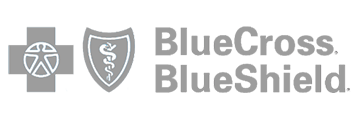Addiction
How to Tell if Someone is High on Drugs
Medically Reviewed By
Written By
Last medically reviewed August 25, 2025
Addiction
Medically Reviewed By
Written By
Last medically reviewed August 25, 2025
If you suspect a loved one or family member is secretly using drugs, it can be challenging to determine what kind they might be using or whether a different health issue is involved. Recognizing the signs that someone is under the influence is essential, especially since different drugs can produce varying effects depending on their class and dosage.
In this blog, you’ll learn how to identify these signs and understand which drugs are more likely to cause certain reactions. This can help determine if your loved one has engaged in substance abuse (or alcohol abuse) or if they are struggling with a drug addiction.
Being high or stoned is an altered physical and mental state caused by using psychoactive substances like methamphetamine or marijuana.[1] While being high is most often linked to illegal street drugs, some prescription medications can also make a person feel high or under the influence.
Examples of common drug categories that are associated with getting high include:[2]
Certain highs are unavoidable, especially if they are listed side effects of an FDA-approved medication. However, mixing drugs (polysubstance use) can raise the risk of feeling intoxicated or experiencing an overdose.[4] Even though some medicines in these categories are legally prescribed, they should not be misused to achieve a illicit high.
People get high for psychological, social, physiological, and emotional reasons, which include:[5]
As you can see, not everyone who gets high chooses to do so happily. Some people are persuaded into it or pressured by loved ones. Others may get high to avoid painful and sometimes dangerous withdrawal symptoms.
If you suspect someone around you is using drugs recreationally or getting high, they may not be honest about it when asked. They might feel embarrassed or unable to explain why they are getting high.
However, several obvious physical signs can reveal if someone is under the influence of drugs or alcohol.
The physical signs of being high include:[6]
Some people seem tired or drowsy when they are high. This is more likely to happen to individuals using depressants.[7]
People who misuse drugs show various cognitive symptoms associated with feeling high. Cognition involves processes like thinking, attention, language, and memory.[8] These functions are regulated by the prefrontal cortex.[9]
Drug abuse interferes with these signals, leading to cognitive delays and the following psychological signs someone is high on drugs:[10]
Although these signs are temporary and will wear off when drug use is discontinued, some can last for several months or even years after cessation.[11]
In addition to the psychological signs of being high, some people also display behavioral changes.
These include:[12]
People who are under the influence of stimulant drugs may take more risks than usual, which can result in accidents and disagreements with loved ones.
Both legal and illegal drugs can lead to a euphoric high.
These include:[13]
Tobacco and nicotine-containing products, though not associated with feeling high, are considered addictive and can alter the way a person thinks and feels.
A high can last anywhere from a few minutes to several hours, and in some cases, an entire day.
Here’s a breakdown of how long a high will last based on the most common substances:
In the beginning, you may experiment with drugs as a way to escape physical or emotional pain. Over time, continual use can blur the line between choosing to use and needing to use. When someone abuses drugs, they run the risk of developing a tolerance to their effects.[20] This means you will need more of the drug to experience the original high.
At this point, you may want to stop, but feel unable to do so due to intense cravings or painful withdrawal symptoms. This is the start of a substance use disorder. Without treatment, a substance use disorder can transition into a full-fledged addiction. This is a chronic relapsing disease that not only makes it even harder to stop using, but significantly increases your chances of suffering an overdose.
To understand why you get high, it is important to work with your health care team or a mental health professional who can help identify the root causes of your drug use and the triggers that lead you to seek the feeling of being high. Cognitive Behavioral Therapy (CBT) is an effective program that can be part of this process. When combined with evidence-based addiction treatments such as detox, your chances of relapsing are significantly reduced.
Are you ready to take the first step toward lasting sobriety?
Contact Southeast Addiction GA and learn about our catalog of comprehensive treatment programs designed to help you escape the clutches of addiction and enjoy your life once again.
Sometimes, these terms are used interchangeably. However, a person can be under the influence of a drug without showing obvious signs of being high. This occurs because some effects fade faster than others, and the lingering symptoms may not be easily visible.
The answer varies based on the kind of drug used, how much was taken, and the method of administration. Usually, it can last for one or more hours.
No, using drugs once will not result in a full-blown addiction. However, using drugs numerous times can lead to a substance use disorder and, in turn, addiction.
[1] Merriam-Webster Dictionary. (n.d.). Stoned. Retrieved from https://www.merriam-webster.com/dictionary/stoned on 2025 Aug 8.
[2] National Institute on Drug Abuse. (2023 Sep 19) Commonly Used Drug Charts. Retrieved from https://nida.nih.gov/research-topics/commonly-used-drugs-charts on 2025 Aug 8.
[3] Kids Health. (2023 Mar). What Are Inhalants? Retrieved from https://kidshealth.org/en/parents/drugs-inhalants.html#:~:text=Inhalants%20are%20things%20that%20are,whipped%20cream%20dispensers%20(whippets) on 2025 Aug 8.
[4] Centers for Disease Control and Prevention (CDC). (2024 Apr 2). Polysubstance Use Facts. Retrieved from https://www.cdc.gov/stop-overdose/caring/polysubstance-use.html on 2025 Aug 8.
[5] National Institute on Drug Abuse. (2020 Jul). Drug Misuse and Addiction. Retrieved from https://nida.nih.gov/publications/drugs-brains-behavior-science-addiction/drug-misuse-addiction on 2025 Aug 8.
[6] Indian Health Service. (n.d.) Warning Signs of Substance and Alcohol Use Disorder. Retrieved from https://www.ihs.gov/asab/familyfriends/warningsignsdrug on 2025 Aug 8.
[7] United States Drug Enforcement Administration. (n.d.). Depressants. Retrieved from https://www.dea.gov/factsheets/depressants#:~:text=What%20is%20their%20effect%20on,blood%20pressure%2C%20and%20slowed%20breathing on 2025 Aug 8.
[8] American Psychological Association. (n.d) Cognition and the Brain. Retrieved from https://www.apa.org/topics/cognition-brain on 2025 Aug 8.
[9] National Library of Medicine. (2021 Jun 11) The Role of the Medial Prefrontal Cortex in Cognition, Ageing and Dementia. Retrieved from https://pmc.ncbi.nlm.nih.gov/articles/PMC8249104/ on 2025 Aug 8.
[10] National Institute on Drug Abuse. (n.d.) Drugs, Brains, and Behavior: The Science of Addiction. Retrieved from https://nida.nih.gov/publications/drugs-brains-behavior-science-addiction/drugs-brain on 2025 Aug 8.
[11] Harvard Health Publishing. (2022 Jun 14) Cognitive Effects in Midlife of Long-Term Cannabis Use. Retrieved from https://www.health.harvard.edu/blog/cognitive-effects-of-long-term-cannabis-use-in-midlife-202206142760 on 2025 Mar 12.
[12] Mental Health Foundation. (2021 Sep 14) Drugs and Mental Health. Retrieved from https://www.mentalhealth.org.uk/explore-mental-health/a-z-topics/drugs-and-mental-health on 2025 Aug 8.
[13] National Institute on Drug Abuse. (2023 Sep 19) Commonly Used Drug Charts. Retrieved from https://nida.nih.gov/research-topics/commonly-used-drugs-charts on 2025 Aug 8.
[14] VeryWell Med. (2024 Aug 4) How Long Does Alcohol Stay in Your System? Retrieved from https://pubmed.ncbi.nlm.nih.gov/16237477/ on 2025 Aug 8.
[15] National Library of Medicine. (2005) Pharmacokinetics of Cannabinoids. Retrieved from https://pubmed.ncbi.nlm.nih.gov/16237477/ on 2025 Aug 8.
[16] National Library of Medicine. (2009 Jul) A Review of the Clinical Pharmacology of Methamphetamine. Retrieved from https://pubmed.ncbi.nlm.nih.gov/19426289/ on 2025 Aug 8.
[17] National Library of Medicine. (2000 Sep) Pharmacology of MDMA in Humans. Retrieved from https://pubmed.ncbi.nlm.nih.gov/11085324/ on 2025 Aug 8.
[18] Australian Government. (n.d.) Product Information: OxyContin Tablets. Retrieved from https://www.accessdata.fda.gov/drugsatfda_docs/label/2007/011522s040lbl.pdf on 2025 Aug 8.
[19] StatPearls. (2023 Sep 4) Phencyclidine Toxicity. Retrieved from https://www.ncbi.nlm.nih.gov/books/NBK507865/ on 2025 Aug 8.
[20] National Cancer Institute. (n.d.). Drug Tolerance. Retrieved from https://www.cancer.gov/publications/dictionaries/cancer-terms/def/drug-tolerance on 2025 Aug 8.






